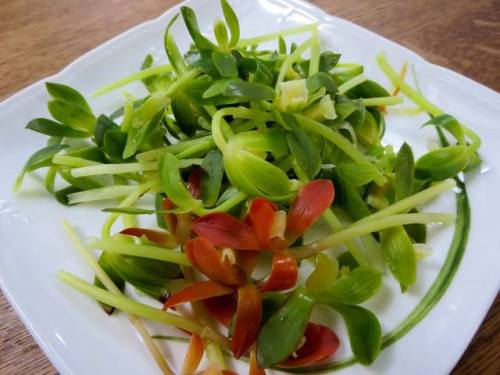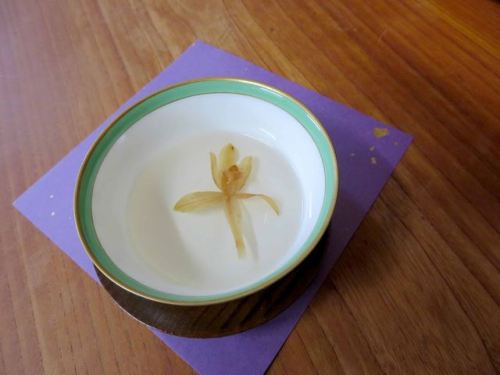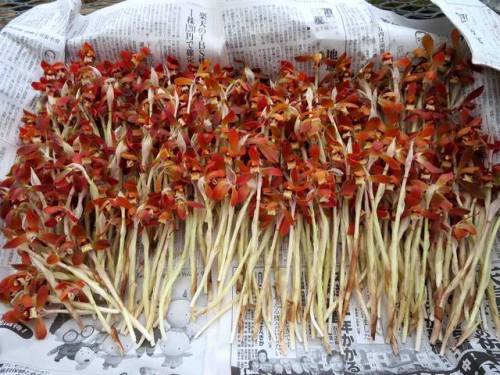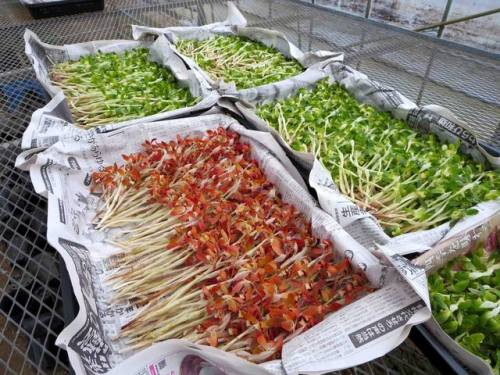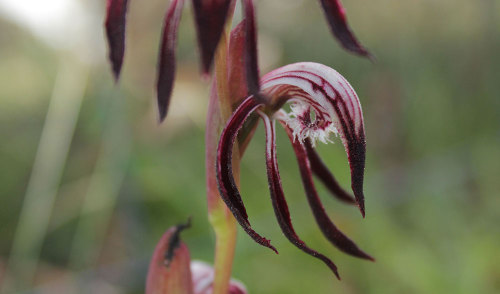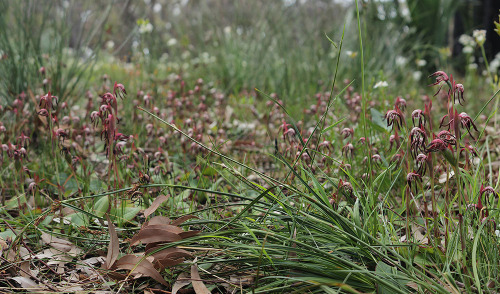#orchid curiosity
“We Japanese sometimes appreciate salted Cymbidium goeringii flowers put into a cup of tea or hot water at festive events, like salted cherry flowers.
Ranyuen collects many Cymbidiumvarieties for those who enjoy them for ornament or for tasting.
It also tastes good if you boil them and eat with soy sauce and mayonnaise.”
Orchidaceae: Cymbidiinae.
Post link
Pyrorchisnigricans, in situ, Wireless Hill Park, Perth, WA, Australia.
This orchid usually flowers en-masse in response to a scorching of a summer fire. Most years all that can be seen are their big, succulent leaves. They are often found in large colonies because they are able to reproduce vegetatively by annually producing several root-like structures with additional tubers, so they don’t need to flower very often.
Orchidaceae: Diurideae.
ByShannon Verhagen. [x]
Post link

